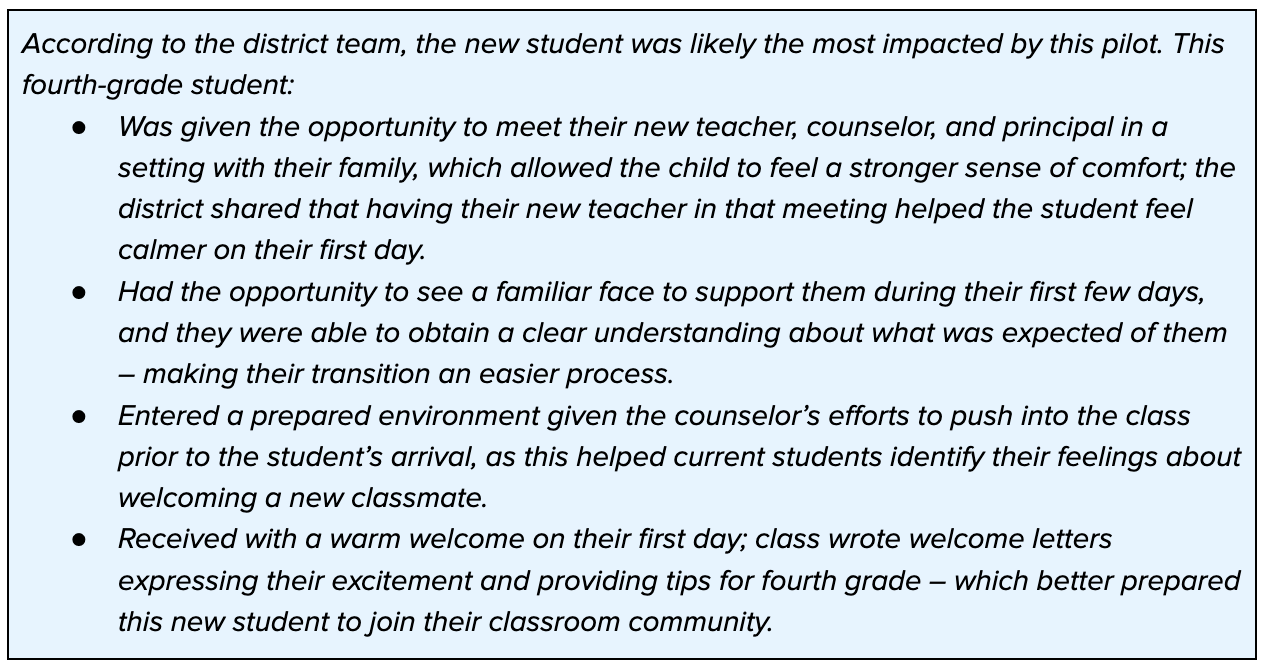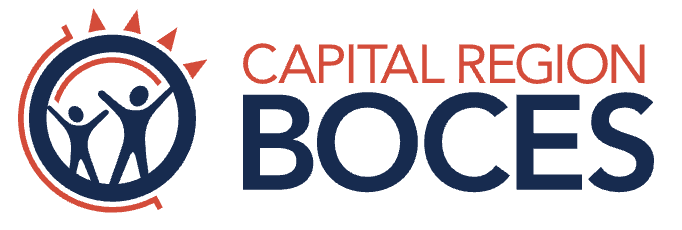Overview
This brief case study features the work one school system completed to address the challenge of student belonging in their virtual and hybrid learning environment. It is part of a larger brief exploring the work that three school system teams undertook in TLA’s Strategy Lab program, which is a networked learning experience that leverages our Real-Time Redesign (RTR) process to help teams identify and address root-cause equity barriers.
Context: Capital Region BOCES
A regional virtual school in New York state serving 100 K-12 students from 24 districts, Cooperative Virtual Learning Academy (CVLA)’s instructional model features a combination of synchronous and asynchronous instruction. They joined Strategy Lab to learn more about intentionally building meaningful relationships in a virtual environment, given their unique model that involves hiring individual teachers from across their region to teach courses.
The Challenge: Building Belonging for New and Existing Learners
The team entered Strategy Lab with two initial challenges: the need to build and maintain a positive classroom culture and to help teachers create opportunities for building relationships and engagement.
According to their team assessment, academy leaders believed that teachers consistently prioritized building relationships, supported students’ social-emotional learning needs, and designed learning experiences to build a sense of community among students. They also shared that staff and teachers have instituted support structures such as online office hours, multiple ways to contact teachers, and community-building activities since the start of the school year.
However, analysis revealed that building meaningful relationships had been challenging due to students regularly entering or leaving the program. As a regional virtual learning provider to multiple districts across New York, CVLA routinely welcomes students throughout the school year; new students struggled with engagement, and current students expressed concerns with the rate of turnaround. The academy team wondered:
“How might we build opportunities for students to build relationships with their classmates?”
“What lessons and activities are teachers using that connect students with their peers and connect the teacher with each student?”
The academy leadership team identified intentionally creating opportunities for relationship-building as an important area of focus. Ongoing conversations then led the team to identify a problem of practice: the challenge of creating a stronger culture of belonging among new and existing students in their elementary classrooms.
Designing and Piloting a Measurable Solution: Setting the Foundations for New Student Entry
To address this issue, the team decided to design and pilot a program to help teachers foster relationship-building among and with students, with an emphasis on supporting classroom entry for new learners. The pilot was three-fold:
Clearly Establishing Norms and Behaviors: The pilot team discussed strategies to help new and current students establish bonds quickly. The purpose of this strategy was to create support structures and detail expected online behaviors. The principal, counselor, and teacher met with the family of an incoming fourth-grade student to share these new support structures.
Push-In Support Around New Student Entry: A counselor and special education teacher joined the grade 3/4 pilot class to track student feelings prior to and right after a new student joined the class. They also leveraged those sessions to encourage and model inclusive online behavior (e.g., turning on cameras and unmuting to speak rather than typing in the chat). Preparing elementary students for the introduction of a new peer paved the way for an easier transition into the virtual classroom for both the new student and students who were already enrolled.
Intentional Relationship-Building Activities for All Learners: The team designed a pilot that built upon a practice instituted by an elementary teacher: personal check-ins with students as they entered the virtual classroom. This new routine mimicked the practice of teachers greeting students as they walked through the door of a physical classroom; ideally, this personal greeting would ensure all students felt acknowledged by their teacher.
What Happened
During the pilot, the counselor introduced an emoji chart to help students explain their emotions (e.g., confused, nervous, happy, confident). The counselor also used a tracker to record their emotions and collected individual student responses before and after the arrival of a new student to the class.
All six participating elementary students relayed their excitement to meet their new classmate, with four specifically mentioning the new student’s name in their response. The pilot teacher noted that the new student quickly assimilated into the class as they turned on their camera and engaged with their peers within the first two days. The teacher remarked that creating a positive classroom culture proved to be a valuable experience that helped students better cope with change. The academy team also attributed the successful transition to the meeting that occurred with the principal, counselor, teacher, and the student’s family.

What’s Next
The academy team plans to iterate on their pilot and try this process once again. Moving forward, they would like to keep conducting intake meetings with the families of new students. However, because enrollment numbers are increasing, the academy team is concerned that their counselor and special education teacher will not be able to spend as much time preparing a class whenever a new student arrives. As they design their next pilot, sustainability has become a key factor. This iterative plan aligns with the reason why the school joined Strategy Lab: to learn more about intentionally building meaningful relationships in a virtual environment.
Resources for Taking ActionBelow are some tools and ideas that can help system leaders and educators think about this strategy in their own context:
|
